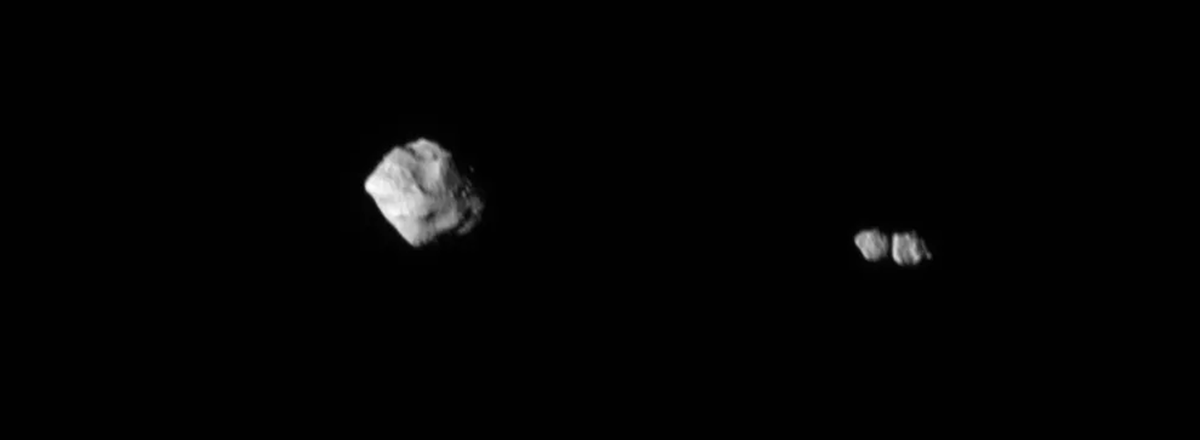NASA's Lucy Probe Discovers Surprise Contact Binary at Dinkinesh
Contact binary systems, where two smaller objects are in contact with each other, are not uncommon in the solar system. However, it's a rare occurrence to find one of these systems orbiting another asteroid.

NASA's Lucy spacecraft recently embarked on its mission to explore various asteroids, and during its first encounter with the asteroid Dinkinesh, it made an unexpected discovery. Not only does Dinkinesh have a previously unknown satellite, but this satellite, upon closer examination, turns out to be a "contact binary." This means that the satellite is composed of two smaller objects touching each other, forming a peculiar structure.
When Lucy captured the first images of Dinkinesh and its satellite during the flyby, the two lobes of the contact binary appeared to be aligned from Lucy's perspective. However, additional images taken during the encounter revealed the true nature of this peculiar object.
Contact binary systems, where two smaller objects are in contact with each other, are not uncommon in the solar system. However, it's a rare occurrence to find one of these systems orbiting another asteroid. This discovery has puzzled scientists and adds an exciting twist to the Lucy mission.
Lucy's main mission objective is to explore the Jupiter Trojan asteroids, but this encounter with Dinkinesh, a small main belt asteroid, was added in January 2023 to test the spacecraft's tracking and imaging capabilities. The successful capture of multiple perspectives during the Dinkinesh encounter allowed scientists to better understand the asteroid's shape and make this unexpected revelation.

